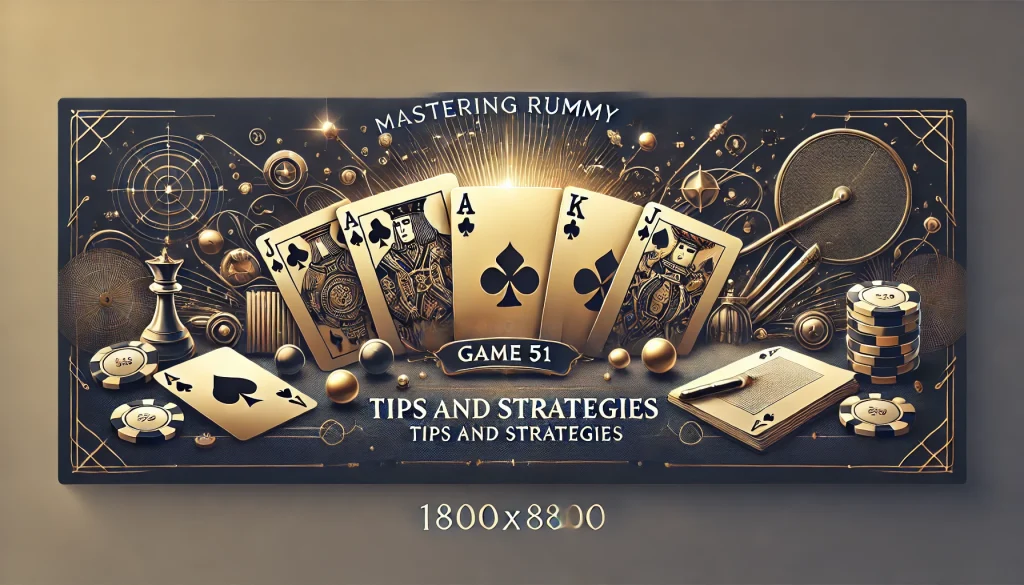
Rummy Game 51: An Extensive rummy culture Guide Rummy Game 51 is a well-known card game that blends aspects of chance, strategy, and skill. A standard 52-card deck, occasionally with jokers, is used in this game, which is usually played with two to six players. The goal is to create legitimate card 777 slots combinations, or melds, which can be runs or sets. For example, a run is a series of three or more cards in the same suit, whereas a set is three or four cards of the same rank but different suits. The reason “51” is the game’s name is that players must score 51 points or more to win.
Each player starts the game with a 777 slots predetermined number of cards, typically seven. The top card is dealt face-up to begin the discard pile, while the remaining cards form a draw pile. Before discarding one card from their hand, each player takes a turn drawing cards from the draw or discard pile. 777 slots real money apk The round is over when a player successfully forms their melds & discards their final card.
Any player hoping to succeed in Rummy Game 51 must comprehend these basic guidelines. The core of Rummy Game 51 is dear lottery chart forming melds and sets, and a player’s chances of winning can be greatly increased by becoming proficient in this area. A meld can be made by putting cards in the same suit in a sequential order or by grouping cards of the same rank.
For example, a player can form a set if they have three Kings from different suits. On the other hand, they have made a run if they have a sequence like 4, 5, and 6 of Hearts. In order to strategically form melds, one must be aware of what other players may be collecting in addition to the cards at hand.
If you observe that your opponent is selecting cards from the discard pile that might help them finish their melds, for instance, you might want to modify your approach accordingly. This can entail dumping cards that aren’t as likely to assist you in creating your own melds or keeping some cards longer than you otherwise might. Jokers and wild cards are essential in Rummy Game 51 because they give players more options when creating melds.
A joker is a very useful tool when attempting to finish a set or run because it can represent any card in the game. To finish your set, for example, if you have two 7s and a joker, you can use the joker as a third 7. The ability to change tactics according to the cards they draw & the melds they are attempting to form is made possible by this versatility. Jokers can be very helpful, but they should only be used sparingly. Long-term possession of a joker can result in missed opportunities if you are unable to successfully meld your other cards.
Also, players should exercise caution when disclosing their reliance on jokers too early in the game because this could reveal their strategy to opponents. The secret to staying ahead of the competition is striking a balance between the use of jokers and conventional meld formation. Rummy Game 51’s discarding and drawing of cards is more than just a standard play; it’s a strategic move that can control how the game unfolds.
When drawing cards, players have to think about how their actions might affect their opponents in addition to their own needs. If you draw a card that could finish your meld but could also be useful to an opponent, for instance, you might want to reevaluate your options. Similar strategic thinking is needed when discarding cards.
Aiming to discard cards that are unlikely to aid in meld formation, players should also consider what their opponents might require. It is frequently preferable to discard a card that could potentially assist an opponent in finishing their set or run rather than a low-value card that does not contribute to your melds. This tactic can help you keep control of the game & restrict the options available to your opponents.
The significance of monitoring opponents’ discards in Rummy Game 51 is frequently disregarded. Observing the cards that other players are discarding or picking up can give you important information about their tactics and possible melds. For example, it may be a sign that an opponent intends to form particular sets or runs if they routinely select particular ranks or suits from the discard pile. Players can make wise choices regarding their own gameplay thanks to this awareness.
If you see that your opponent is gathering cards in a certain suit, you may decide to keep those cards longer than normal to keep them from finishing their melds. On the other hand, it might be a good time to take advantage of your opponent’s melds if you observe them discarding cards that could aid in your own formation. Your ability to observe at this level can greatly improve your game positioning. Comprehending the point system is crucial for proficient hand management in Rummy Game 51. There is a point value associated with each card: numbered cards (2–10) are worth their face value, face cards (Jacks, Queens, and Kings) are worth 10 points each, and depending on how they are used in melds, aces can be worth either 1 or 11 points.
When another player goes out, the objective is to reduce the total point value of the unmelded cards in your hand in addition to creating melds. Achieving a balance between meld formation and point value minimization is essential for effective hand management. For instance, it could be wise to discard high-point cards early in the game if you find yourself holding them and they don’t help with your melds. In contrast, it may be beneficial to hold onto low-point cards that are challenging to meld but could come in handy later until you can create more valuable combinations.
To succeed in Rummy Game 51, one must have a winning mentality. In addition to comprehending the game’s mechanics, this calls for developing psychological fortitude and flexibility. Gamers must maintain composure under duress and be prepared to modify their plans of action in response to shifting game conditions. To reduce your losses, you must promptly reevaluate your hand if, for example, an opponent unexpectedly goes out before you have finished your melds. lottery sambad old Accepting both wins and losses as teaching moments is another aspect of cultivating a winning mindset. Examining previous games can reveal which tactics were successful and which ones could be enhanced in subsequent contests.
This introspective exercise promotes player development & improves performance in ensuing games. As with any skill-based game, Rummy Game 51 requires practice to become more proficient. Playing with lottery sambad old different opponents on a regular basis can expose players to a variety of tactics & play styles, which will improve their comprehension of how the game works. Practice games also give players the chance to try out new strategies without the pressure of competition. By using books or internet resources devoted to Rummy gameplay, players can also gain knowledge of sophisticated strategies. Frequently, these resources offer valuable perspectives on intricate tactics that can improve a player’s performance beyond simple strategies.
Also, taking part in local clubs or online lottery sambad old forums can help to foster conversations with other enthusiasts who exchange advice & experiences that help improve one’s skills. To sum up, learning Rummy Game 51 necessitates a combination of strategic thinking, mental toughness, and consistent practice. Players can greatly increase their chances of winning this captivating card game by comprehending the basics of meld formation, making good use of jokers, strategically managing discards, keeping track of opponents’ moves, calculating points intelligently, cultivating a winning mindset, & making a commitment to continuous skill development.lottery sambad old




